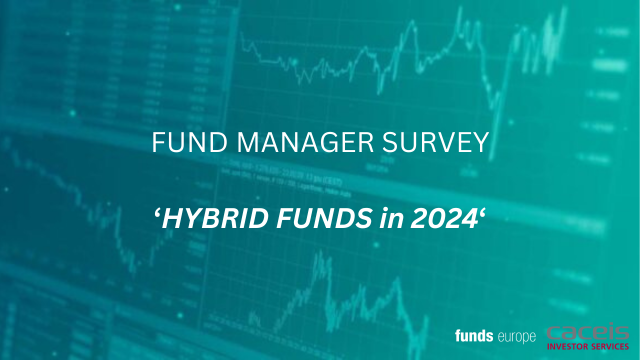Unigestion’s Cross Asset Solutions team believe that multi asset strategies with a strong emphasis on downside protection are the key to navigating through different market environments.
There is a growing consensus that returns from traditional asset classes will come under pressure in the years ahead. For many investors, multi asset strategies can offer the potential to access attractive risk-adjusted returns in these uncertain markets, as well as offer valuable portfolio diversification.
Unigestion has been managing multi asset portfolios since 1993 and the philosophy is deeply rooted in our investment DNA, which relies on active risk management, a thorough attention to portfolio construction and the contribution of both quantitative and qualitative methodologies.
Cross Asset Solutions
Today, our multi asset capability is run by our Cross Asset Solutions (CAS) team and is led by Jérôme Teiletche. The 22-strong team brings a combination of skills including portfolio construction, risk management, experience in managing sophisticated single and multi asset portfolios, as well as alternative investment strategies.
In December 2014, the team launched the Uni-Global Cross Asset Navigator strategy, better known as ‘Navigator’, which seeks to deliver consistent risk-adjusted returns over a full market cycle, with equity-like returns, while delivering significantly lower long-term risk than the equity market. Managed over a three-to-five-year investment horizon, Navigator aims to deliver cash plus 4% p.a. net of fees.
Balance of Quantitative Techniques and Qualitative Analysis
While the world of investment management generally separates quantitative techniques and judgemental ones, the CAS team’s investment process combines the rigour of a systematic approach which provides protection against behavioural biases and the qualitative analysis of experienced portfolio managers.
The team’s core philosophy is based on the belief that risk premia vary over time and allocations need to be dynamically tilted through a process that identifies opportunities across business and market cycles. Accordingly, they have created a dynamic macro risk-based allocation process that seeks to achieve diversification across economic regimes, traditional and alternative risk premia, management styles and time horizons.
In practice, this means Navigator is actively managed as a combination of three pillars, each with different approaches and objectives:
The Strategic Allocation is based on the belief that portfolio construction needs to be anchored around strong macroeconomic analysis and that proper diversification pays off in the long run in delivering superior risk-adjusted returns. To benefit as much as possible from diversification, the investment universe has been designed to be as broad as possible and therefore includes traditional risk premia, such as developed and emerging markets equities and bonds, credit, and commodities, as well as alternative risk premia, which encompass macro directional, yield capture, and equity factors.
To determine this strategic allocation, the team has broken down the economic cycle into four macro regimes: the main one corresponds to the base-line scenario of steady economic growth without inflationary pressures, while the three other regimes pertain to adverse conditions: recessions, inflation surprises, and episodes of market stress.
Once they have been defined, thorough quantitative analysis allows the team to map the investment universe to these four regimes. Risk allocation in the portfolio is then a function of the long-term frequency of occurrence for each economic regime.
While risk-based investing provides a strong basis on which to build a multi asset portfolio, the team is aware that the returns of risk premia vary over time. Their performance can often be linked to different macroeconomic and market conditions. For example, during recessions, government bonds will generally outperform equities.
Objective: to provide investors with a long-term positive return by harvesting as many sources of risk premia as possible.
As a result, the second pillar – Dynamic Allocation – seeks to allow the portfolio to adapt to ever-changing economic and market conditions over the medium term. In order to systematically assess the prevailing macro and market conditions at any time, the team developed a set of tools – called Nowcasters – that cover most of the forces influencing market returns, notably growth, inflation and market stress. These systematic signals are used to evaluate the probability of falling into one of the aforementioned macro regimes.
However, the team is not convinced that a purely quantitative approach can perfectly assess forward-looking risks and therefore complement this quantitative approach with qualitative analysis which aims to extract relative value across and within asset classes. In addition, the team can also increase or reduce the fund’s risk target as a whole based on the current macro context. For example, ahead of Brexit, the team tactically reduced the risk target due to the uncertainty around the event and the potential for correlation between assets to increase.
Objective: to adapt the portfolio to current macro and market conditions and ultimately smooth the return profile for investors.
The final pillar is Opportunistic Allocation, where the team seeks to capture uncorrelated and unique opportunities arising from specific or transient market conditions (such a political events, market over-reactions, etc). While this pillar is made up of discretionary trades, it is still managed under the same robust framework as the other pillars. Strict risk management is adopted, with the use of stop-losses and real-time monitoring of profit and loss, in order to ensure that this pillar retains a low correlation with the strategic and dynamic allocations.
Objective: to identify and capture uncorrelated short-term sources of Alpha.
Risk-based implementation
Portfolio construction and risk analysis is at the core of everything the CAS team does and they take a view that risk-based investing is the most robust way to manage a multi asset portfolio. Contrary to some other approaches, their risk model focuses on expected shortfall rather than volatility, with the view that this constitutes a broader risk measure and encompasses more dimensions of risk. The process is then underpinned by further analysis from Unigestion’s independent risk team.
Ultimately, Navigator seeks to deliver smooth long-term performance from a well-diversified multi asset portfolio. In a world where traditional investments may come under pressure, the ability to generate all-weather returns and navigate volatility could prove valuable.
For more information, please contact: [email protected]
This document is addressed to professional investors onlyand must not be distributed, published, reproduced or disclosed to any other person apart from the intended recipient. It is a promotional statement of our investment philosophy and services. It constitutes neither investment advice nor an offer or solicitation to subscribe in the strategies or in the investment vehicles it refers to. Some of the investment strategies described or alluded to herein may be construed as high risk and not readily realisable investments, which may experience substantial and sudden losses including total loss of investment. These are not suitable for all types of investors. The views expressed in this document do not purport to be a complete description of the securities, markets and developments referred to in it. The document is for information purposes only.Unigestion does not guarantee the accuracy and completeness of information provided. No representation or warranty, expressed or implied, is or will be made by Unigestion and no responsibility or liability is or will be accepted. Unless otherwise stated, source is Unigestion. All information provided here is subject to change without notice. It should only be considered current as of the date of publication without regard to the date on which you may access the information. Past performance is not a guide to future performance. The value of investments and the income from them may fall as well as rise and are not guaranteed. Rates of exchange may cause the value of investments to go up or down.
Unigestion (UK ) Ltd, is registered and authorized by the Financial Conduct Authority.
©2017 funds europe





